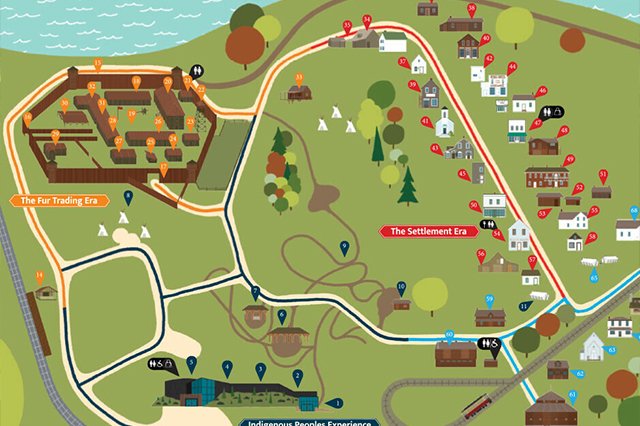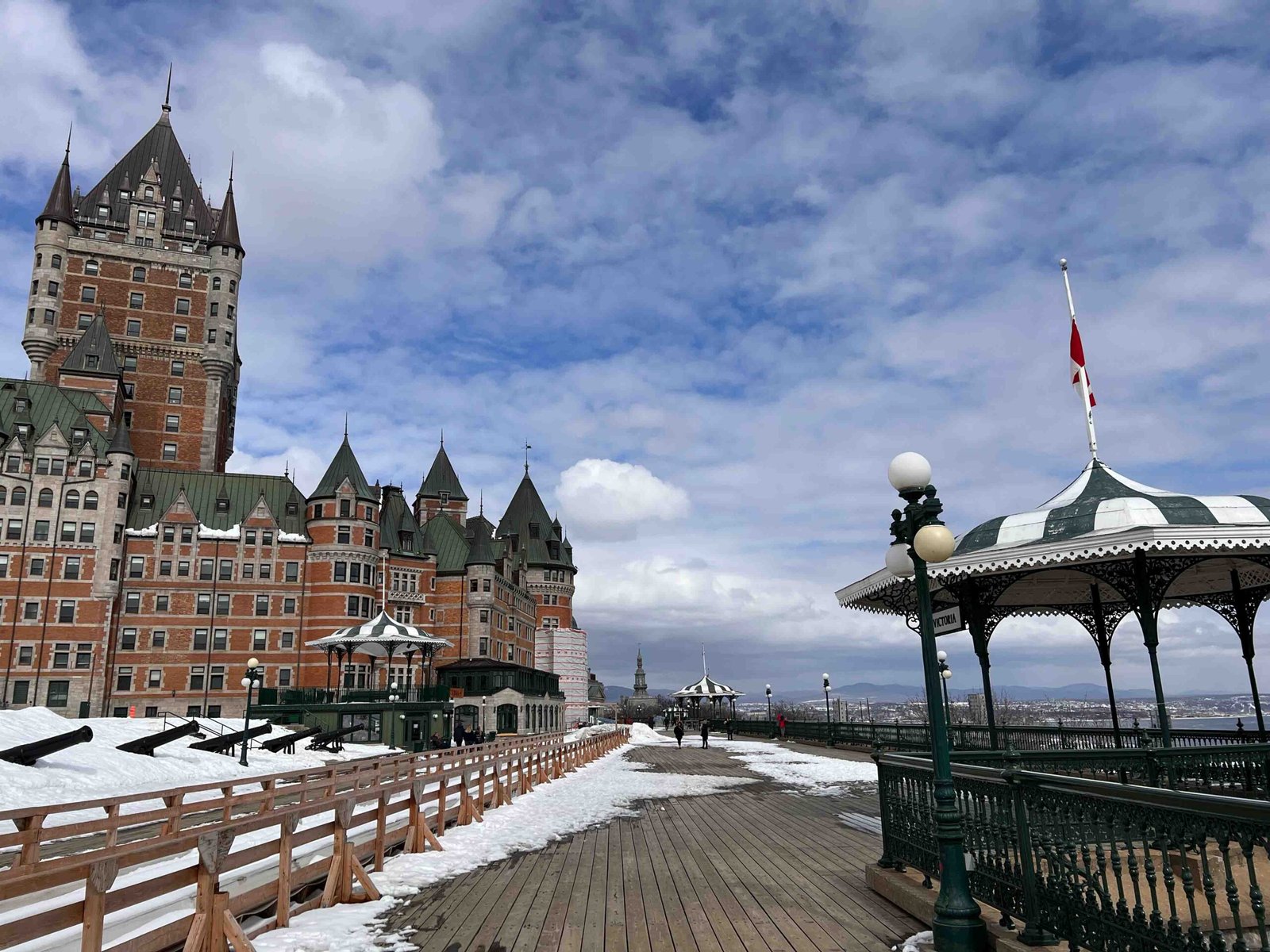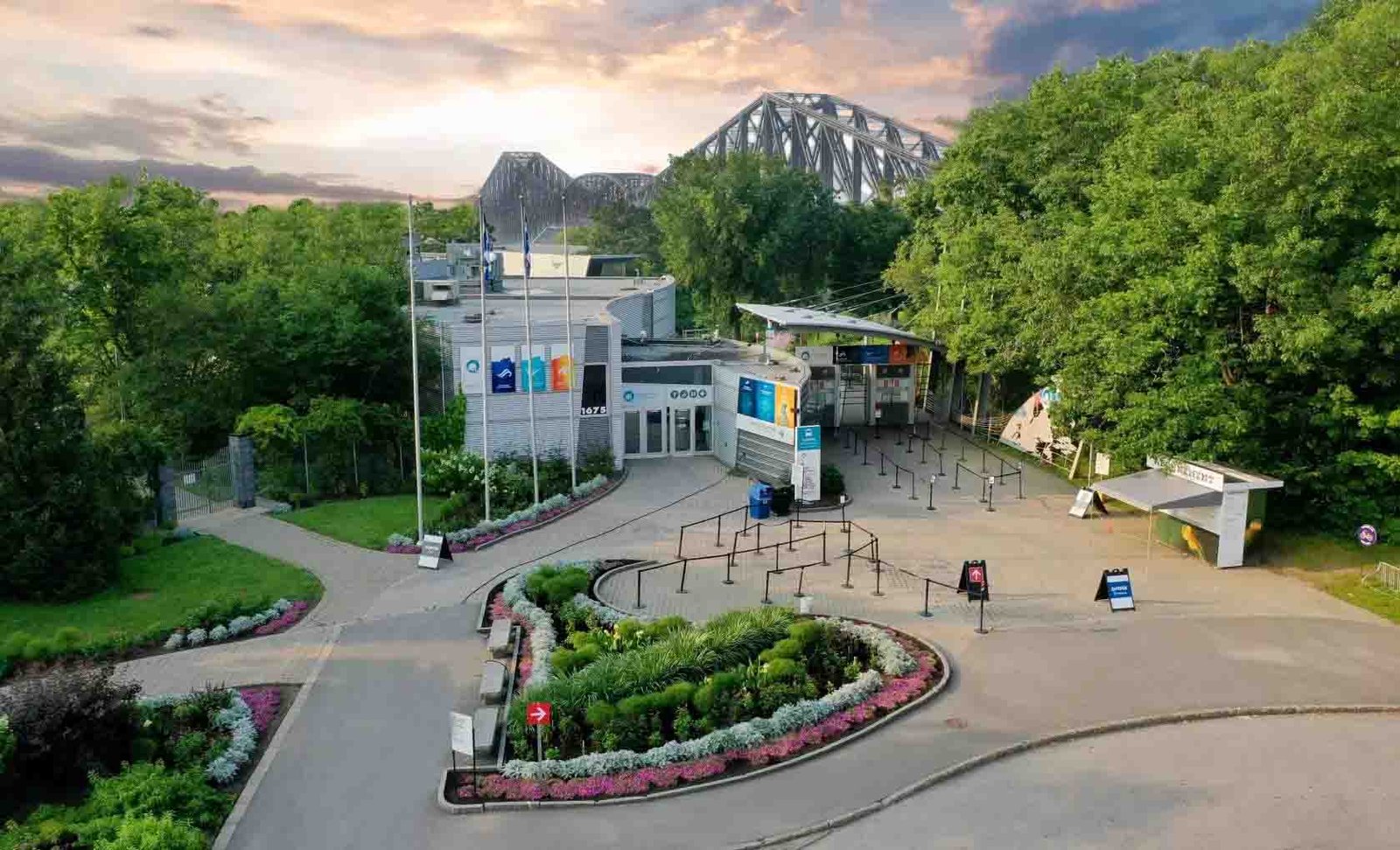A Visitor’s Guide to Fort Edmonton Park: Historical Attractions, Experiences, and Events
Fort Edmonton Park is Canada’s largest living history museum, offering an immersive journey into Edmonton’s past, from the fur trade era to the early 20th century. Located on the banks of the North Saskatchewan River, this expansive park recreates four key periods of Edmonton’s history, allowing visitors to experience life as it was through historical buildings, costumed interpreters, and interactive exhibits. Whether you’re interested in Indigenous history, the pioneer era, or the early days of the city, Fort Edmonton Park provides a fascinating and fun way to explore Alberta’s rich heritage.
A Living History Museum in Four Eras
Fort Edmonton Park spans several decades of Edmonton’s history, divided into four distinct time periods: the Indigenous Peoples Experience, the Fur Trade Era, 1885 Street, 1905 Street, and 1920 Street. Visitors can step into historically accurate buildings, engage with costumed interpreters, and take part in hands-on activities that bring Edmonton’s past to life.
What to See and Do at Fort Edmonton Park
- Indigenous Peoples Experience:
- One of the park’s most powerful and immersive sections, the Indigenous Peoples Experience explores the rich and diverse cultures of the First Nations and Métis peoples who lived in the Edmonton area long before European settlers arrived. The exhibit was developed in consultation with Indigenous elders and communities, offering an authentic and respectful representation of their histories, stories, and cultural practices.
- Interactive Exhibits:
- The Indigenous Peoples Experience includes interactive displays, multimedia presentations, and artifacts that highlight the connection between Indigenous peoples and the land, as well as their ongoing contributions to the region.
- Cultural Demonstrations:
- Visitors can engage with interpreters who share traditional knowledge, such as beading, drumming, and storytelling. These experiences offer insights into the customs, traditions, and history of Alberta’s Indigenous communities.
- 1846 Fort Edmonton – The Fur Trade Era:
- The 1846 Fort is a recreation of the original Hudson’s Bay Company trading post, which played a central role in the fur trade and the establishment of Edmonton as a major hub. This section of the park allows visitors to step back into the mid-19th century, when fur traders, Métis families, and Cree trappers worked together in the bustling fur trade economy.
- Fur Trading Post:
- Explore the fort’s buildings, including the trading post, fur storage rooms, and workshops where interpreters demonstrate traditional crafts such as blacksmithing, carpentry, and fur preparation.
- Fort Life:
- Meet costumed interpreters portraying the lives of fur traders, Métis women, and Indigenous trappers. Visitors can learn about daily life in the fort, the importance of the fur trade, and the relationships between Indigenous peoples and European settlers.
- 1885 Street – A Growing Settlement:
- 1885 Street transports visitors to the time when Edmonton was a small but growing settlement on the western frontier. This street showcases the challenges and opportunities faced by pioneers as they built homes, businesses, and farms.
- Pioneer Homes and Shops:
- Walk through fully furnished pioneer homes, blacksmith shops, general stores, and churches, all recreated to reflect the period. Interpreters explain the daily lives of Edmonton’s early residents, including farmers, tradespeople, and their families.
- Steam Train Rides:
- Visitors can hop aboard the park’s steam-powered train, which runs along a short track through the park, offering a fun and educational ride back in time. The train is a popular attraction, especially for families and children.
- 1905 Street – Edmonton’s Boomtown Era:
- By 1905, Edmonton was booming, thanks to its status as the capital of the newly created province of Alberta. 1905 Street captures the energy and optimism of this period, with larger homes, businesses, and a growing middle class.
- Streetcars and Automobiles:
- Ride a vintage streetcar down 1905 Street, a nod to Edmonton’s expanding transportation system during the early 20th century. Visitors can also see vintage automobiles that reflect the technological advancements of the time.
- Recreated Businesses:
- Visit a recreated theatre, photography studio, bank, and newspaper office to learn about the city’s growing commercial sector. Each building is staffed by interpreters who share stories about Edmonton’s development and the people who lived and worked in the city during its boomtown years.
- 1920 Street – The Roaring Twenties:
- The 1920s brought significant changes to Edmonton, including modern conveniences, new forms of entertainment, and the growth of industry. 1920 Street recreates the atmosphere of this vibrant decade, complete with period-appropriate shops, homes, and even a midway.
- 1920s Midway:
- One of the highlights of 1920 Street is the 1920s Midway, a fully functional carnival area complete with games, rides, and concession stands. Visitors can ride the Ferris wheel, play classic carnival games, and enjoy the fun and nostalgia of a vintage amusement park.
- Movie Theatre:
- Visit the Capitol Theatre, a 1920s-style movie house that shows films and newsreels from the era. The theatre also hosts live performances, including vaudeville acts, making it a great place to sit back and enjoy a slice of 1920s entertainment.
- Costumed Interpreters and Hands-On Activities:
- Throughout the park, costumed interpreters play the roles of historical figures, from Indigenous peoples to fur traders, settlers, and entrepreneurs. These interpreters provide an interactive, hands-on experience by answering questions, demonstrating traditional skills, and leading workshops.
- Crafts and Demonstrations:
- Visitors can participate in crafts such as butter churning, blacksmithing, quilting, and cooking over an open fire. These activities offer a chance to try out some of the skills that were essential to life in the past.
- Special Events and Seasonal Programming:
- Fort Edmonton Park hosts a variety of special events throughout the year, including Canada Day celebrations, historic reenactments, and seasonal festivals. These events often feature additional activities, such as traditional music, dancing, and performances, making them a fun way to experience the park in a lively setting.
- Halloween and Christmas:
- The park transforms during Halloween and Christmas, offering haunted tours, holiday-themed events, and opportunities to celebrate these holidays with a historical twist.
- Dining and Shopping:
- Fort Edmonton Park offers several options for dining and shopping, all designed to fit with the historical theme of the park. Visitors can enjoy meals at the Johnson’s Café, which serves traditional dishes in a vintage setting, or grab a treat at the Midway Concession.
- Gift Shops:
- The park’s gift shops offer a range of unique souvenirs, including historical books, local crafts, and handmade goods that reflect the spirit of Alberta’s past.
- Camping and Overnight Experiences:
- For those who want to extend their stay, Fort Edmonton Park offers unique overnight experiences, including the opportunity to stay in a recreated Indigenous camp or a historic hotel. These immersive experiences allow visitors to sleep under the stars or in period-accurate accommodations, providing a deeper connection to the park’s history.
How to Get There
Fort Edmonton Park is located in Edmonton’s River Valley, a short drive from the city center, making it easily accessible by car, public transportation, or bike.
- Address: 7000 143 St NW, Edmonton, AB T6H 4P3
- Public Transport: The park is accessible via Edmonton Transit Service (ETS), with bus routes stopping nearby.
- Parking: Ample parking is available on-site, with additional overflow parking during peak season.
Visiting Hours and Admission
Fort Edmonton Park is open seasonally from May to October, with special events taking place throughout the year. Admission tickets can be purchased online or at the gate.
- Hours: Typically open from 10 a.m. to 5 p.m. (seasonal).
- Admission: Fees apply, with discounts for seniors, students, and children. Family packages and annual passes are available.
- Official Website: Fort Edmonton Park
Best Time to Visit
Fort Edmonton Park is most active during the summer, when all of the historical buildings, attractions, and experiences are fully open. Special seasonal events, such as Halloween and Christmas programming, are also popular times to visit.
- Summer (May to September): Best for the full experience, with all streets and attractions open.
- Fall and Winter: Visit during special events like Halloween or Christmas for unique, themed experiences.
A Must-Visit for History Buffs and Families
With its rich blend of history, interactive exhibits, and fun activities, Fort Edmonton Park offers something for everyone. Whether you’re exploring the fur trade era, riding the 1920s midway, or learning from costumed interpreters, the park provides an engaging and educational way to experience Edmonton’s past. Perfect for families, history enthusiasts, and anyone looking to immerse themselves in Alberta’s heritage.






Leave a Reply